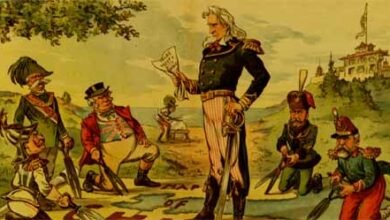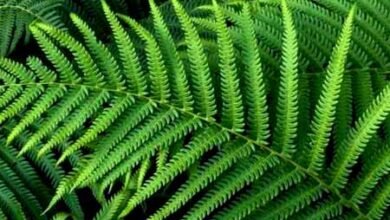
वनस्पति विज्ञान से संबंधित-79.
| 1. Glycolysis takes place? = Cytoplasm.
2. In the Cabs cycle A.T.P. How many molecules are formed? = 30. 3. A.T.P. from one molecule of glucose in anaerobic respiration. How many molecules are formed? = 02. 4. What is A.T.P.? = High energy level phosphate molecule. 5. A.T.P. Mitochondria are required for synthesis? = O2. 6. Alcohol is formed? = Anaerobic Respiration. 7. Krebs cycle occurs? = In the matrix of mitochondria. 8. Hydrogen combines with oxygen at the end of which action? = Electron transport mechanism (ETS). 9. What is the final product of glycolysis? = Pyruvic acid. 10. Is oxy a product of respiration in our muscles? = Lactic acid. 11. Krebs is the end product of the cycle? = CO2 and H2O. 12. T.C.A. Is another name for it? = Krebs cycle. 13. What Energy packet of a living cell is? = ATP. 14. The formation of ATP by attaching phosphate molecules to ADP is called? = Phosphorylation. 15. Synthesis of a 6-carbon compound in the Krebs cycle is followed by chemical reactions between whom? = Oxalo Acetic Acid and Acetyl Co – A. 16. During which action oxidative phosphorylation does not occur? = Respiratory. 17. Which plants have special properties of light respiration? = CAM. 18. How much energy is produced by the pneumatic respiration of glucose? = 673 kcal. 19. What is the link between glycolysis and the Krebs cycle? = Acetyl Co – A. 20. Essential for both photosynthesis and respiration? = Cytochrome. 21. R.Q. of sprouted seeds of egg. Does it happen? = Less than one. 22. is found in cytochrome? = Fe. 23. Is it related to the action of photorespiration? = Glyoxisome. 24. In the mitochondria, where is the electron access mechanism located? = In the inner membrane. 25. What does photophosphorylation mean? = Making of ATP from ADP. ======== ========== ============ ====== 1. ग्लाइकोलिसिस की क्रिया होती है? = साइटोप्लाज्म. 2. केब्स चक्र में A.T.P. के कितने अणु निर्मित होते हैं? = 30. 3. अवायवीय श्वसन में ग्लूकोज के एक अणु से A.T.P. के कितने अणु बनते हैं? = 02. 4. A.T.P.क्या है? = उच्च ऊर्जा स्तरीय फॉस्फेट अणु. 5. A.T.P. संश्लेषण के लिए माइटोकॉण्ड्रिया को आवश्यकता होती है? = O2. 6. एल्कोहॉल बनता है? = अवायवीय श्वसन. 7. क्रेब्स चक्र होता है? = माइटोकॉण्ड्रिया के मैट्रिक्स में. 8. हाइड्रोजन, ऑक्सीजन के साथ किस क्रिया के अंत में जुड़ता है? = इलेक्ट्रान परिवहन तंत्र (ETS). 9. ग्लाइकोलिसिस का अन्तिम उत्पाद है? = पाइरुविक एसिड. 10. हमारी पेशियों में अनॉक्सी श्वसन का उत्पाद है? = लैक्टिक अम्ल. 11. क्रेब्स चक्र का अन्तिम उत्पाद है? = CO2 और H2O. 12. T.C.A. का दूसरा नाम है? = क्रेब्स चक्र. 13. किसी जीवित कोशिका का ऊर्जा रूपी पैकेट है? = ATP. 14. फॉस्फेट अणु का ADP से जुड़कर ATP बनाना कहलाता है? = फॉस्फोराइलेशन. 15. क्रेब्स चक्र में 6 कार्बन यौगिक का संश्लेषण, किस-किस के मध्य रासायनिक क्रिया के पश्चात् होता है? = ऑक्जेलो एसीटिक अम्ल तथा एसिटिल Co – A. 16. किस क्रिया के समय ऑक्सीडेटिव फॉस्फोरिलीकरण नहीं होता है? = श्वसन. 17. प्रकाश-श्वसन किन पौधों का विशेष गुण होता है? = CAM. 18. ग्लूकोज के वायवीय श्वसन से कितनी ऊर्जा उत्पन्न होती है? = 673 kcal. 19. ग्लाइकोलिसिस एवं क्रेब्स चक्र के बीच की कड़ी है? = एसीटिल Co – A. 20. प्रकाश-संश्लेषण और श्वसन दोनों के लिए आवश्यक होता है? = साइटोक्रोम. 21. अण्डी के अंकुरित बीजों का R.Q. होता है? = एक से कम. 22. सायटोक्रोम में पाया जाता है? = Fe. 23. प्रकाश-श्वसन की क्रिया से सम्बन्धित है? = ग्लाइऑक्सीसोम. 24. माइटोकॉण्ड्रिया में इलेक्ट्रॉन अभिगमन तन्त्र स्थित होता है? = आन्तरिक झिल्ली में. 25. फोटोफॉस्फोरिलेशन का अर्थ होता है? = ADP से ATP का बनना.
|





